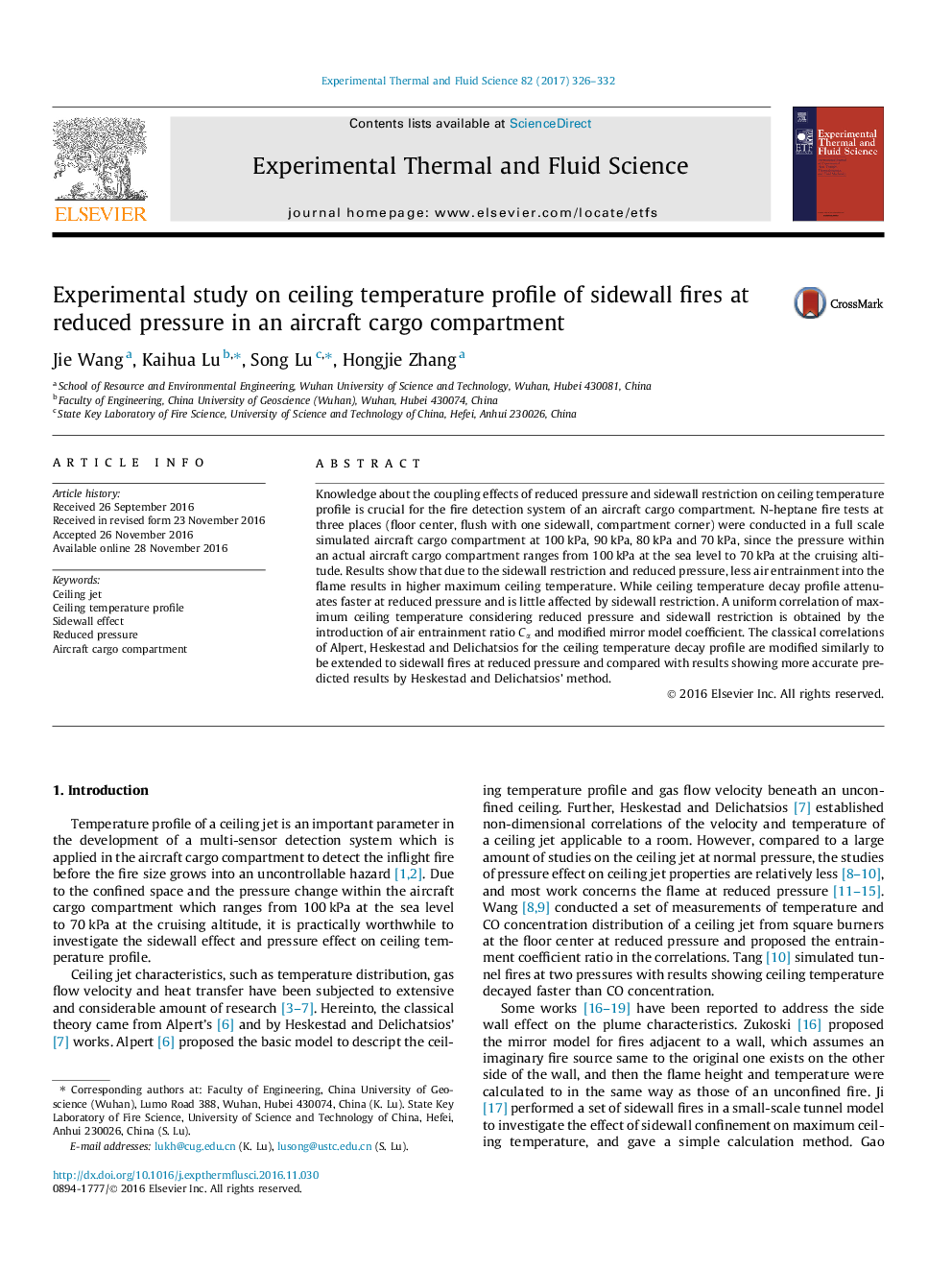| Article ID | Journal | Published Year | Pages | File Type |
|---|---|---|---|---|
| 4992774 | Experimental Thermal and Fluid Science | 2017 | 7 Pages |
Abstract
Knowledge about the coupling effects of reduced pressure and sidewall restriction on ceiling temperature profile is crucial for the fire detection system of an aircraft cargo compartment. N-heptane fire tests at three places (floor center, flush with one sidewall, compartment corner) were conducted in a full scale simulated aircraft cargo compartment at 100 kPa, 90 kPa, 80 kPa and 70 kPa, since the pressure within an actual aircraft cargo compartment ranges from 100 kPa at the sea level to 70 kPa at the cruising altitude. Results show that due to the sidewall restriction and reduced pressure, less air entrainment into the flame results in higher maximum ceiling temperature. While ceiling temperature decay profile attenuates faster at reduced pressure and is little affected by sidewall restriction. A uniform correlation of maximum ceiling temperature considering reduced pressure and sidewall restriction is obtained by the introduction of air entrainment ratio Cα and modified mirror model coefficient. The classical correlations of Alpert, Heskestad and Delichatsios for the ceiling temperature decay profile are modified similarly to be extended to sidewall fires at reduced pressure and compared with results showing more accurate predicted results by Heskestad and Delichatsios' method.
Related Topics
Physical Sciences and Engineering
Chemical Engineering
Fluid Flow and Transfer Processes
Authors
Jie Wang, Kaihua Lu, Song Lu, Hongjie Zhang,
